0 引言
1 样品与实验
1.1 样品
表1 实验样品基础数据Table 1 Basic data of the experimental samples |
| 样品号 | 深度/m | 岩性 | R O/% | TOC/% | Rock-Eval分析 | XRD分析 | ||||||
|---|---|---|---|---|---|---|---|---|---|---|---|---|
| T max /℃ | I H(mgHC/gTOC) | I O(mgHC/gTOC) | 石英 /% | 长石 /% | 黏土矿物 /% | 黄铁矿 /% | | |||||
| 样品1 | 390.4 | 页岩 | 3.35 | 7.04 | 584 | 15 | 2 | 44.5 | 1.1 | 49.2 | 0.9 | 4.3 |
| 样品2 | 300.1 | 页岩 | 3.38 | 2.37 | 586 | 14 | 32 | 39.6 | 1.3 | 50.9 | 5.3 | 2.9 |
1.2 实验方法
1.2.1 平衡水吸附实验
1.2.2 低压CO2与N2吸附实验
2 结果与讨论
2.1 平衡水吸附特征
2.2 吸附水对孔隙结构参数的影响
表2 样品1在不同吸附水饱和度条件下的孔隙结构参数Table 2 Pore structural parameters of sample 1 under different adsorption water saturation conditions |
| 吸附水饱和度 /% | N2吸附参数 | CO2吸附参数 | ||
|---|---|---|---|---|
| 非微孔比表面积/(m2/g) | 非微孔孔容/(cm3/g) | 微孔比表面积/(m2/g) | 微孔孔容/(cm3/g) | |
| 0 | 10.41 | 0.016 65 | 28.35 | 0.011 75 |
| 12.81 | 3.76 | 0.015 78 | 20.13 | 0.008 54 |
| 33.48 | 3.53 | 0.013 58 | 15.12 | 0.005 74 |
| 69.84 | 1.30 | 0.006 05 | 13.55 | 0.005 02 |
| 82.86 | 1.19 | 0.005 77 | 12.36 | 0.004 48 |
表3 样品2在不同束缚水饱和度条件下的孔隙结构参数Table 3 Pore structural parameters of sample 2 under different adsorption water saturation conditions |
| 平衡水饱和度 /% | N2吸附参数 | CO2吸附参数 | ||
|---|---|---|---|---|
| 非微孔比表面积/(m2/g) | 非微孔孔容/(cm3/g) | 微孔比表面积/(m2/g) | 微孔孔容/(cm3/g) | |
| 0 | 9.90 | 0.015 98 | 16.04 | 0.006 67 |
| 9.58 | 3.65 | 0.014 65 | 11.51 | 0.004 71 |
| 14.45 | 3.34 | 0.012 74 | 11.47 | 0.004 66 |
| 52.04 | 2.37 | 0.011 88 | 11.46 | 0.004 60 |
| 79.51 | 1.27 | 0.005 58 | 11.29 | 0.004 57 |



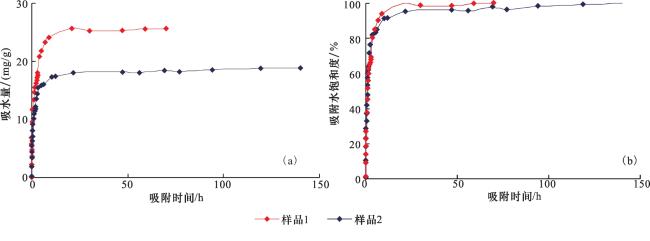
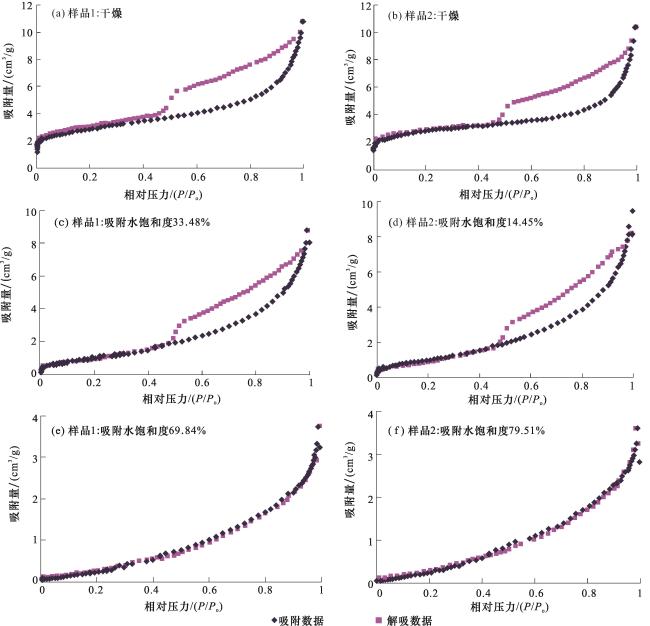
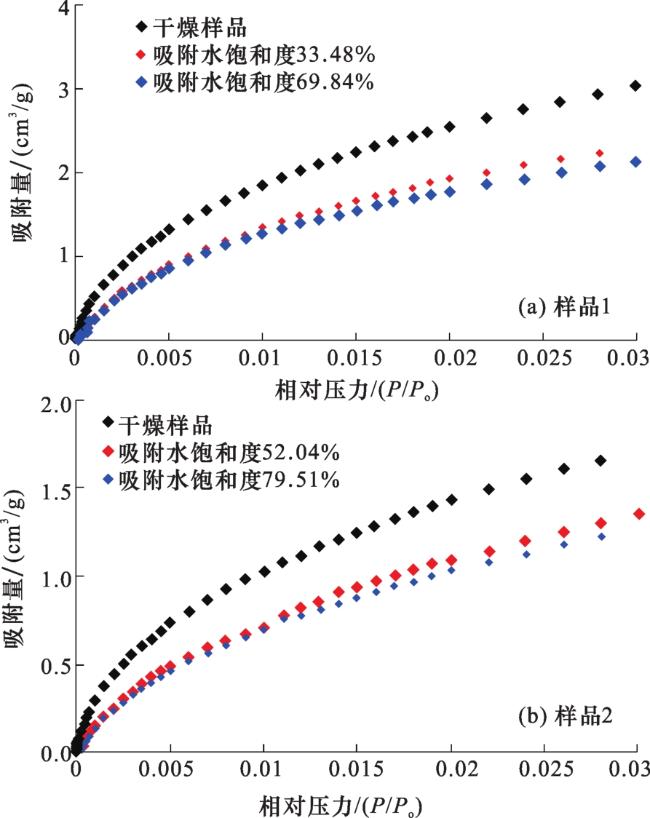
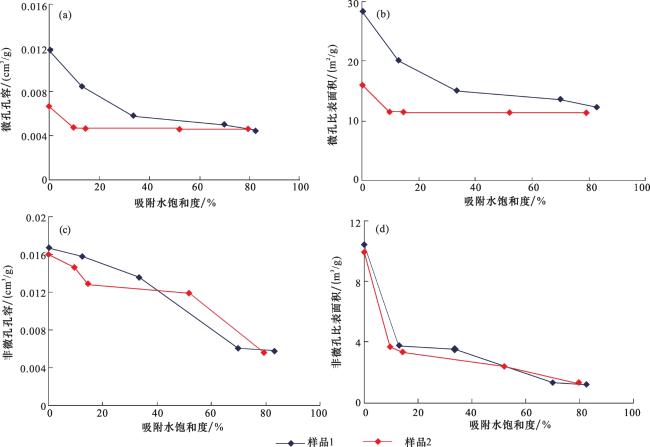
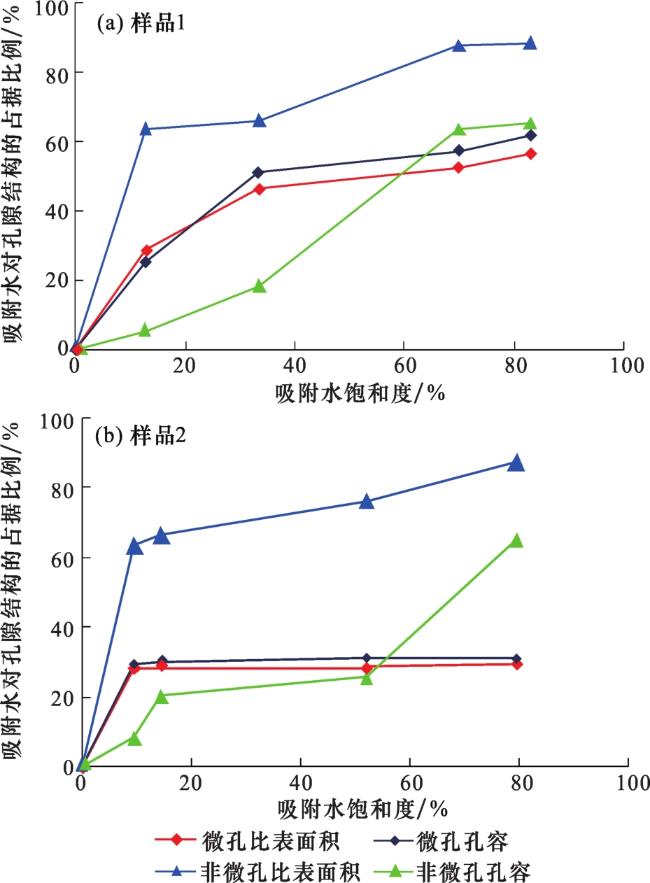
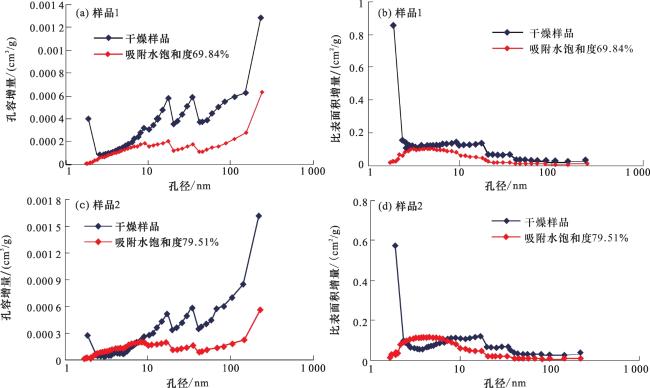
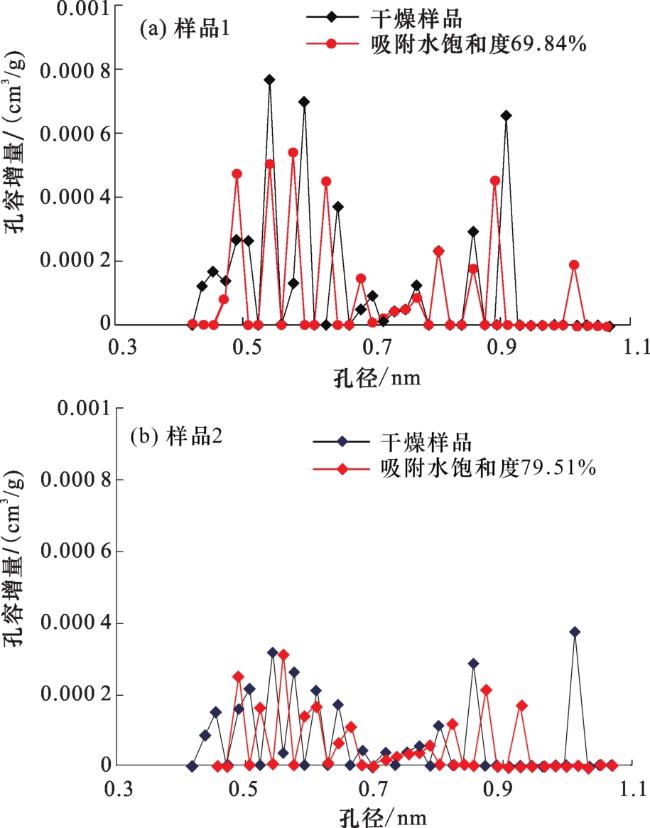
 甘公网安备 62010202000678号
甘公网安备 62010202000678号